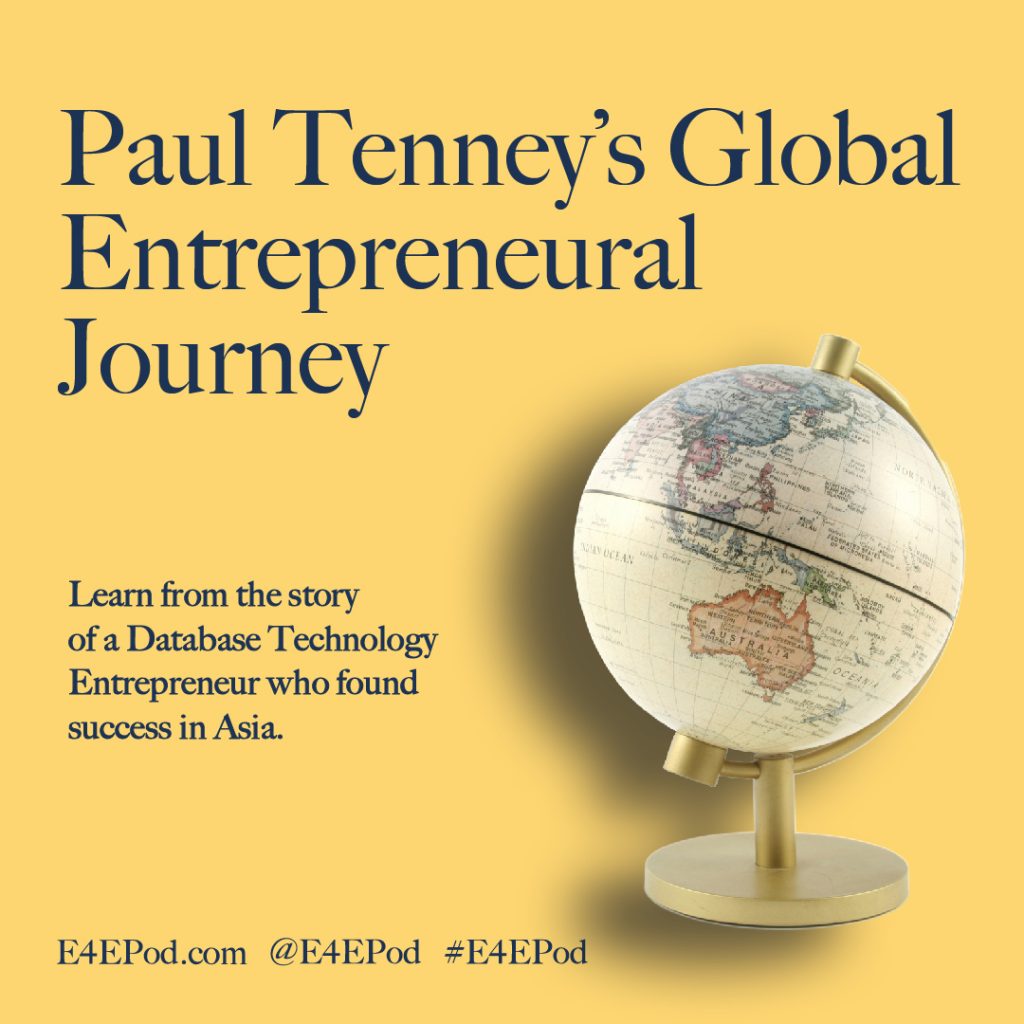49. Paul Tenney’s Global Entrepreneurial Journey Leads To Database Technology Success in Asia
On this week’s Economics For Entrepreneurs podcast, Paul Tenney describes and explains the 8 stages of his international journey to start, grow and manage a customer-success focused database technology company in Asia.
Key Takeaways & Actionable Insights
Storytelling can be a powerful aid to effective business strategy. A good story can identify both a destination and a path to get there, and unite people on a shared journey. That’s why we like to use the Economics For Entrepreneurs podcast to tell journey stories from time to time: to illustrate and inspire.
This week’s guest, Paul Tenney, tells us a particularly illustrative journey story, since it combines an entrepreneurial career of achievement and purposeful geographic mobility.
First, pick a promising industry with a potential for long term growth.
In the 2000’s, Paul identified database marketing technology as a growth industry, with expansive future promise but current low maturity (“e-mail spammers” were disdained at cocktail parties).
Learn and build a track record working for a growth company in the growth industry.
Paul rapidly accumulated executive experience, since growth demands that all employees step up to new responsibilities.
Develop your customer focus.
A fundamental lesson of Austrian Economics is that understanding customers and their needs always comes first in business building. This is especially true in emerging business technology. It’s easy to become focused on “product” (the technology) and lose sight of the customer, who may not understand the tech but view it as a means to an end rather than an end in itself. Paul focused on customer success activities, which revealed customer problems to be solved, and taught him the primacy of customer care in building business relationships.
Accelerate your accumulation of experience.
Experience becomes knowledge and knowledge becomes a personal competitive advantage. A growth business can provide accelerated knowledge-expanding opportunities. In Paul’s case, the opportunity came via an international posting, opening new customer vistas and revealing new customer requirements from the same technology.
Identify a partnering route to launch your business.
Your goal is to establish an independent business to run. The challenge of the transition from employment to entrepreneurship can be modified in a number of ways. One is to find a partnership that can both bear some uncertainty for you, and provide you with a strategic resource advantage. Paul partnered with the company that had previously employed him to provide technology, so that he did not have to build it from scratch. He developed his own customer base using this technology.
Establish an initial value proposition.
The technology partnership supported a strong customer value proposition in Paul’s local geography: experience the benefits of world-class big company tech, with customized/localized service, and the low unit economics that come with the partner’s scale.
Then take the Customer Success route to deeper understanding of market needs.
Paul had learned how a well-developed Customer Success capability could generate insightful customer problem statements. These represent unmet needs for which Paul’s new company could develop new and unique local solutions.
Gain higher ground with an advanced business proposition.
Paul was able to establish new high levels of customized local service (e.g. language) while maintaining the global list price for technology. Insights gleaned over time led to the realization that simplifying the technology proposition – e.g. by reducing the complexity caused by hyper-personalization of e-mail marketing to end-consumers, and focusing on the binary question of whether or not e-mails generated sales – resulted in a better customer value experience.
This focus also resulted in new-to-the-world services (such as the “fatigue curve” and “rehabilitation rate”), further elevating the value proposition.
Paul shared a lot more of his experience: about raising capital, about value theory, about the role of resilience in the entrepreneurial journey, and about the customer success of de-complexifying technology. Don’t miss his inspiring journey story and download the free illustrated journey map here.
Learn more about Paul’s company Ematic Solutions from their company website.
Free Downloads & Extras
Paul Tenney’s Global Entrepreneurial Journey: Our Free E4E Knowledge Graphic
Understanding The Mind of The Customer: Our Free E-Book
Start Your Own Entrepreneurial Journey
Ready to put Austrian Economics knowledge from the podcast to work for your business? Start your own entrepreneurial journey.
